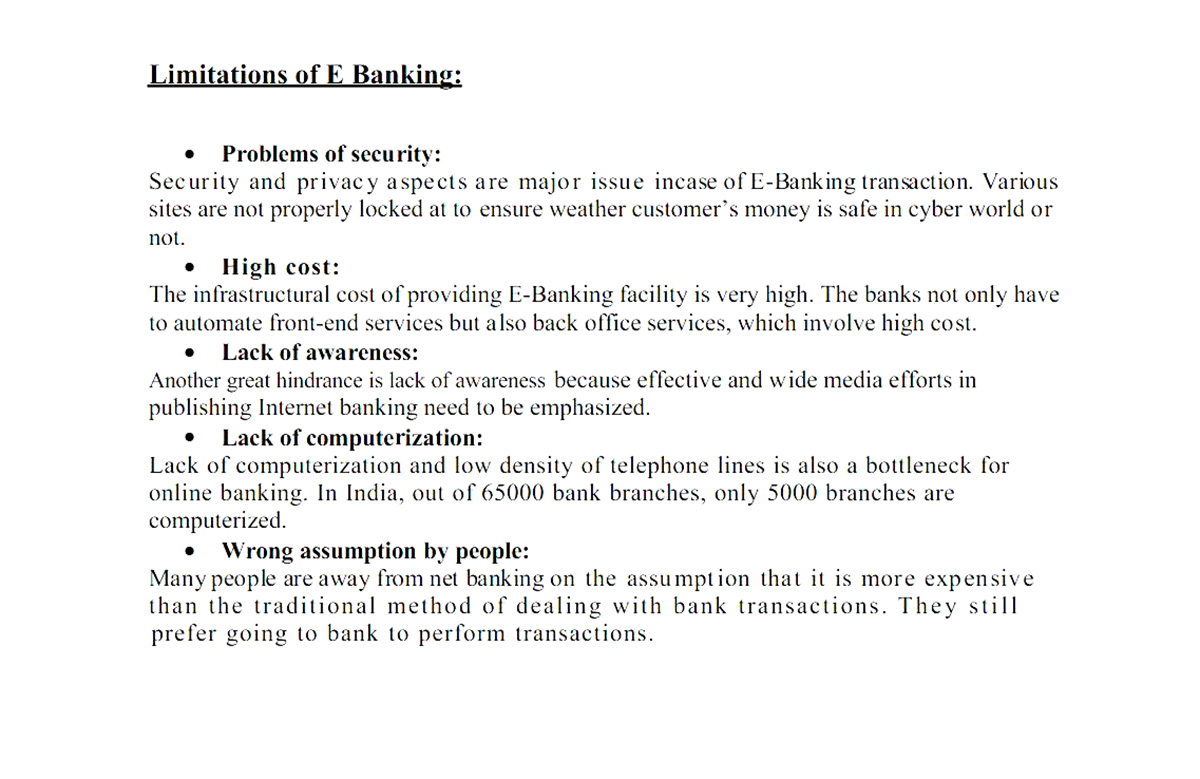Home>Finance>A Firms Capital Structure Is How A Firm Is Financing Its Projects Using Investor Supplied Capital


Finance
A Firms Capital Structure Is How A Firm Is Financing Its Projects Using Investor Supplied Capital
Modified: December 30, 2023
Maximize your firm's financing potential with a well-structured capital framework, utilizing investor-supplied capital to support your finance projects.
(Many of the links in this article redirect to a specific reviewed product. Your purchase of these products through affiliate links helps to generate commission for LiveWell, at no extra cost. Learn more)
Table of Contents
- Introduction
- Definition of Capital Structure
- Importance of Capital Structure
- Factors Influencing a Firm’s Capital Structure
- Types of Capital Structure
- Advantages and Disadvantages of Different Capital Structures
- How Firms Finance Their Projects Using Investor-Supplied Capital
- Debt Financing
- Equity Financing
- Measuring the Capital Structure of a Firm
- Impact of Capital Structure on Firm Value
- Factors to Consider When Determining the Optimal Capital Structure
- Conclusion
Introduction
Welcome to the world of finance, where companies make important decisions regarding their capital structure to finance their projects. The capital structure of a firm refers to how a company raises funds to undertake its operations and invest in new projects.
Every company strives to achieve the optimal capital structure that allows them to balance their financial obligations and maximize their profits. The key consideration for any firm is to determine the right mix of debt and equity to fund their activities.
Understanding capital structure is crucial because it affects a company’s financial health, risk profile, and ability to grow. By analyzing a firm’s capital structure, investors can assess its financial stability, debt servicing capacity, and potential returns on investment.
In this article, we will delve into the world of capital structure, exploring its definition, importance, and the factors that influence it. We will also discuss the various types of capital structure, the advantages and disadvantages of each, and how firms finance their projects using investor-supplied capital.
So, whether you’re an investor looking to evaluate a company’s financial position or a business owner seeking to make informed decisions about your own company’s capital structure, this article will provide you with valuable insights and knowledge.
Definition of Capital Structure
Capital structure refers to the composition of a company’s liabilities or the way a firm finances its operations and growth by using a combination of debt and equity.
Essentially, it represents the mix of long-term debt, short-term debt, preferred equity, and common equity that a company uses to raise funds for its capital investment and day-to-day operations.
Debt refers to borrowed money that must be repaid over a specific period and carries an interest rate. This can include bank loans, bonds, or other forms of debt instruments. Equity, on the other hand, represents ownership in the company and is provided by shareholders who invest their money in exchange for ownership rights and potential dividends.
The capital structure of a company impacts its financial stability, risk profile, and potential growth prospects. The decision of how much debt and equity to use is a strategic choice made by the management based on various factors, such as the company’s cash flow, profitability, industry norms, and risk appetite.
By finding the right balance between debt and equity, companies can optimize their capital structure and enhance their financial performance. However, it’s important to note that the optimal capital structure may vary across industries and individual companies.
The primary objective of a company’s capital structure is to maximize shareholder value and minimize the cost of capital. The cost of capital refers to the expense a company incurs to raise funds, which includes interest payments on debt and the cost of issuing equity.
It’s worth noting that the capital structure of a company is not fixed and can change over time as the company’s financial needs and market conditions evolve. For instance, a company may increase its debt levels to finance expansion plans or reduce debt to lower its risk exposure.
Understanding the concept of capital structure is crucial for investors and financial analysts as it provides insights into a company’s financial health and risk profile. By analyzing a company’s capital structure, investors can assess the company’s ability to meet its debt obligations, determine its cost of capital, and evaluate potential investment opportunities.
Importance of Capital Structure
The capital structure of a company plays a vital role in its financial management and has a significant impact on its overall performance and success. Here are key reasons why capital structure is important:
- Optimizing Cost of Capital: The capital structure determines the mix of debt and equity a company uses to raise funds. It is crucial to strike a balance that minimizes the cost of capital, as this directly affects the profitability and financial health of the firm. By analyzing the cost of debt and the expected return on equity, companies can determine the most efficient composition of their capital structure.
- Managing Financial Risk: The capital structure also influences the financial risk faced by a company. A firm with high levels of debt may face higher interest expenses and be more susceptible to economic downturns, while a company with excessive equity may have a lower risk of bankruptcy but potentially lower returns. By carefully managing the ratio of debt to equity, companies can strike a balance that aligns with their risk tolerance and ensures long-term stability.
- Maximizing Shareholder Value: The optimal capital structure can directly impact shareholder value. By finding the right mix of debt and equity, companies can maximize returns to shareholders through increased earnings and lower financing costs. This, in turn, can enhance the company’s stock price and attract more investors.
- Financing Growth and Expansion: Capital structure decisions are crucial for companies seeking to finance their growth and expansion plans. A well-structured capital mix can provide the necessary funds to invest in new projects, acquire assets, or enter new markets. By utilizing the right combination of debt and equity, companies can access the capital needed to fuel their growth strategies.
- Maintaining Flexibility: The flexibility of a company’s capital structure is paramount in adapting to changing market conditions and financial needs. Companies with a balanced capital structure have the ability to adjust their debt-to-equity ratio as per market fluctuations, interest rate changes, or economic uncertainties. This flexibility allows companies to respond to challenges and seize opportunities effectively.
In summary, the capital structure of a company is of great importance as it impacts the cost of capital, financial risk, shareholder value, and the ability to finance growth. By carefully managing the composition of debt and equity, companies can optimize their capital structure to achieve their financial objectives and position themselves for long-term success.
Factors Influencing a Firm’s Capital Structure
The capital structure of a firm is influenced by several factors that shape the decision-making process of how to finance the company’s operations and investments. These factors include:
- Business Risk: The level of business risk faced by a company can influence its capital structure. Higher business risk, such as operating in a volatile industry or being subject to intense competition, may lead to a conservative capital structure with lower levels of debt. Conversely, a company with lower business risk may be more comfortable taking on higher levels of debt.
- Financial Risk: Financial risk refers to the risk associated with the use of debt financing. Companies with stable cash flows and a history of strong profitability may have a higher capacity to take on debt without jeopardizing their financial stability. On the other hand, companies with inconsistent or unpredictable cash flows may prefer to rely more on equity financing to avoid the risk of defaulting on their debt obligations.
- Tax Considerations: The tax environment plays a significant role in shaping a firm’s capital structure. Interest payments made on debt are often tax-deductible, which reduces the overall tax liability for a company. Consequently, companies operating in countries with favorable tax policies may be incentivized to use more debt financing to benefit from the tax shield. However, it’s essential to strike a balance, as excessive debt may increase the risk of financial distress.
- Access to Capital Markets: The availability and cost of capital in the financial markets can influence a firm’s capital structure decisions. Companies with strong credit ratings and robust investor confidence may have easier access to debt financing at more favorable interest rates. Conversely, companies with limited access to capital markets or perceived higher risk may rely more on equity financing.
- Industry Norms: Industry-specific factors and norms can also impact a firm’s capital structure. Different industries have varying levels of risk and financial requirements, which influence the optimal mix of debt and equity. For example, capital-intensive industries such as manufacturing or infrastructure may require higher levels of debt financing to fund their operations and investments.
- Management Philosophy: The personal preferences and philosophies of a company’s management team can also shape its capital structure decisions. Some managers may have a strong aversion to debt and prefer to rely on equity financing, while others may be more comfortable leveraging the benefits of debt to enhance returns and drive growth.
- Market Conditions: The prevailing market conditions, including interest rates, inflation rates, and investor sentiment, can impact a firm’s capital structure decisions. Low interest rates may incentivize companies to borrow more and take advantage of cheaper financing costs. Conversely, high interest rates may discourage excessive debt and prompt companies to rely more on equity financing.
Each of these factors, and their interplay, must be carefully considered when determining the optimal capital structure for a firm. The goal is to strike a balance that aligns with the company’s risk profile, financial objectives, and market dynamics to ensure sustainable growth and shareholder value.
Types of Capital Structure
Capital structure can vary between different companies and industries, and there are several common types of capital structure that companies may adopt. These include:
- Equity-Driven Capital Structure: In an equity-driven capital structure, a company relies mostly on equity financing to fund its operations and investments. This means that the company raises funds by issuing shares to investors in exchange for ownership in the company. This type of capital structure typically results in a lower risk of financial distress since there is no obligation to make regular interest payments like with debt financing. However, it may limit the company’s ability to access large amounts of capital quickly.
- Debt-Driven Capital Structure: A debt-driven capital structure is characterized by a higher reliance on debt financing. Companies with this type of structure borrow funds through bank loans, bonds, or other debt instruments to finance their operations and investments. This allows them to raise substantial amounts of capital quickly. However, it also increases the financial risk as the company has to make regular interest payments and principal repayments. Failure to meet debt obligations may lead to financial distress or bankruptcy.
- Hybrid Capital Structure: A hybrid capital structure is a combination of debt and equity financing. Companies with a hybrid structure raise funds through a mix of equity issuance and borrowing. This type of capital structure provides a balance between the benefits of debt and equity financing. It allows companies to benefit from the tax advantages of debt while also providing the flexibility and lower risk associated with equity financing. Many companies opt for a hybrid capital structure as it offers a good balance between risk and return.
- Conservative Capital Structure: A conservative capital structure involves a cautious approach to debt financing. Companies with a conservative structure keep their debt levels relatively low compared to equity. This approach aims to minimize financial risk and prioritize financial stability. While it may limit the company’s ability to leverage debt for growth, it provides a higher level of security and reduces the risk of default. Conservative capital structures are commonly found in industries with high uncertainty or fluctuations in cash flows.
- Aggressive Capital Structure: An aggressive capital structure involves a higher reliance on debt financing. Companies with an aggressive approach take on significant levels of debt to finance their operations and investments. This approach allows them to benefit from the advantages of leverage, such as increased returns on equity. However, it also exposes the company to higher financial risk and the potential for financial distress if interest rates rise or cash flows decline. Aggressive capital structures are common in industries with stable cash flows and strong growth prospects.
It is important to note that these types of capital structures are not mutually exclusive, and companies may have a blend of different capital structure characteristics. The specific capital structure chosen by a company depends on various factors, such as its risk tolerance, industry dynamics, financial objectives, and access to capital markets.
Companies can also adjust their capital structure over time to adapt to changing market conditions and financial needs. By carefully considering the advantages and disadvantages of each type of capital structure, companies can find the optimal balance that aligns with their specific circumstances and goals.
Advantages and Disadvantages of Different Capital Structures
Each type of capital structure has its own set of advantages and disadvantages. Understanding these can help companies make informed decisions about the most suitable capital structure for their specific needs and circumstances. Here are the key advantages and disadvantages of different capital structures:
- Equity-Driven Capital Structure:
- Advantages: By relying mostly on equity financing, companies can minimize the risk of bankruptcy or default as there is no obligation to make regular interest payments. Equity financing also allows companies to retain full ownership and control.
- Disadvantages: The main drawback of an equity-driven capital structure is the potential dilution of ownership. Issuing more equity to raise funds can lead to a decrease in existing shareholders’ ownership percentage and control. Additionally, equity financing may be more expensive in terms of the cost of issuing shares and potential dividend payments.
- Debt-Driven Capital Structure:
- Advantages: Debt financing offers several advantages, including the ability to leverage existing assets and generate higher returns on equity. Interest payments on debt are often tax-deductible, reducing the overall tax liability for the company.
- Disadvantages: One significant disadvantage of a debt-driven capital structure is the financial risk associated with debt repayment obligations. If a company fails to meet its debt obligations, it may face severe consequences such as bankruptcy or the loss of assets. Additionally, companies may find it challenging to secure debt financing during periods of economic instability or if they have a poor credit rating.
- Hybrid Capital Structure:
- Advantages: The hybrid approach combines the benefits of both equity and debt financing. It allows companies to benefit from the tax advantages of debt while also providing flexibility and reduced financial risk associated with equity financing. It provides a balanced approach to capitalize on the strengths of both types of financing.
- Disadvantages: The main drawback of a hybrid capital structure is the complexity of managing both equity and debt components. Companies need to carefully manage their debt levels to avoid overburdening their financial obligations while ensuring they maintain sufficient equity to meet their financial needs.
- Conservative Capital Structure:
- Advantages: A conservative capital structure provides a higher level of financial stability and security. By keeping debt levels relatively low, companies can minimize the risk of default or financial distress, even during economic downturns or periods of low cash flow. This approach is suitable for companies with high business risk or unstable cash flows.
- Disadvantages: One disadvantage of a conservative capital structure is the potentially limited access to capital for growth and expansion. Restricting debt levels may prevent companies from taking advantage of favorable investment opportunities or delaying their plans due to a lack of funds.
- Aggressive Capital Structure:
- Advantages: An aggressive capital structure allows companies to take advantage of the benefits of leverage, such as increased returns on equity. By using debt financing to fund their operations and investments, companies can potentially achieve higher profitability and growth.
- Disadvantages: The main disadvantage of an aggressive capital structure is the higher financial risk associated with higher levels of debt. If interest rates rise or cash flows decline, companies with aggressive capital structures may face challenges in meeting their debt obligations and risk financial distress.
It’s important for companies to carefully evaluate their financial position, risk profile, and growth objectives when selecting a capital structure. They should consider the advantages and disadvantages of each type and strive to find the optimal balance that aligns with their long-term goals and maximizes shareholder value.
How Firms Finance Their Projects Using Investor-Supplied Capital
Firms have various options for financing their projects using investor-supplied capital. These options primarily fall into two categories: debt financing and equity financing.
Debt Financing: Debt financing involves borrowing funds from investors or financial institutions that must be repaid over a specific period with interest. Firms can access debt financing through sources such as bank loans, corporate bonds, or issuance of commercial paper. The funds obtained through debt financing can be used to finance projects, increase working capital, or cover other operational expenses.
Debt financing offers several advantages for firms. It allows them to benefit from the interest tax shield, as interest payments made on debt are typically tax-deductible. Debt financing also provides a fixed or predictable repayment structure, which allows firms to plan for cash flow management. However, it is important to note that excessive reliance on debt financing can increase financial risk and create a burden of interest payments, especially if the firm’s cash flows are inconsistent or market conditions change.
Equity Financing: Equity financing involves raising capital by selling shares of the company to investors, who become shareholders and owners of the firm. Firms can access equity financing through initial public offerings (IPOs), rights issues, private placements, or venture capital funding. The funds obtained through equity financing can be used to fund new projects, expand operations, or acquire assets.
Equity financing provides several benefits for firms. It does not require repayment, and firms are not obligated to make regular dividend payments unless they choose to do so. Equity financing also provides firms with access to expertise and networks from investors, particularly when venture capital firms are involved. However, dilution of ownership and control is a potential drawback when issuing new shares to raise equity capital.
In practice, firms often utilize a combination of debt and equity financing to finance their projects. This hybrid approach allows them to leverage the benefits of both financing options while mitigating the risks associated with excessive reliance on one type of capital. By carefully blending debt and equity financing, firms can optimize their capital structure, manage the cost of capital, and meet their financial needs effectively.
It’s important for firms to consider various factors when deciding which investor-supplied capital option is most suitable for their projects. These factors include the cost of capital, risk tolerance, cash flow projections, market conditions, and the goals and growth prospects of the firm. By aligning their financing strategy with their overall business objectives, firms can effectively raise the necessary capital to support their projects and drive sustainable growth.
Debt Financing
Debt financing is a common method that firms use to raise capital for their projects. It involves borrowing money from investors or financial institutions and agreeing to repay the borrowed funds over a specified period, typically with interest.
There are various sources of debt financing available to firms, including bank loans, corporate bonds, and commercial paper. Each source has its own terms and conditions, interest rates, and repayment schedules. The choice of debt financing source depends on factors such as the firm’s creditworthiness, the amount of capital needed, and the desired repayment structure.
Debt financing offers several advantages for firms:
- Lower Cost of Capital: Debt financing is generally considered less expensive than equity financing. Interest rates on debt are often lower than the expected return on equity, resulting in lower overall cost of capital for firms.
- Tax Advantages: One significant advantage of debt financing is the tax deductibility of interest payments. In many jurisdictions, interest expenses are tax-deductible, reducing the firm’s tax liability and improving its after-tax profitability.
- Fixed Repayment Structure: Debt financing provides firms with a predetermined repayment structure, including regular interest payments and repayment of principal. This allows firms to plan and manage their cash flows efficiently.
- Maintaining Ownership Control: Unlike equity financing, taking on debt does not dilute the ownership stakes of existing shareholders. It allows the firm to retain full control over its operations and decision-making processes.
However, it’s important to consider the potential disadvantages and risks associated with debt financing:
- Financial Risk: Taking on debt increases a firm’s financial risk. In times of economic downturn or if the firm faces financial difficulties, the burden of debt repayments coupled with interest expenses can strain cash flow and potentially lead to default.
- Interest Payments: Unlike equity financing, debt financing requires regular interest payments to investors. These payments can put a strain on a firm’s cash flow, especially if the interest rates increase or if the firm is experiencing financial difficulties.
- Covenants and Restrictions: When entering into debt agreements, firms may face certain covenants and restrictions imposed by lenders. These provisions can limit the firm’s flexibility in making business decisions or require additional collateral, impacting the firm’s operations.
- Market Conditions: The availability and terms of debt financing can be influenced by prevailing market conditions. In times of economic instability or tight credit markets, firms may find it challenging to obtain debt financing or may face higher interest rates.
Overall, debt financing is a valuable tool for firms to raise capital for their projects. It offers advantages such as lower cost of capital, tax benefits, and predictable repayment structures. However, firms must carefully manage the risks associated with debt, including financial risk, interest payments, and compliance with loan covenants. By striking the right balance between debt and equity financing, firms can optimize their capital structure and effectively raise the necessary funds to support their growth and expansion aspirations.
Equity Financing
Equity financing is a method that firms use to raise capital by issuing shares of their company to investors in exchange for ownership and a share of future profits. Unlike debt financing, equity financing does not require repayment of funds or regular interest payments. Instead, investors become shareholders in the firm and participate in the firm’s profits and losses.
There are several sources of equity financing available to firms, including initial public offerings (IPOs), rights issues, private placements, and venture capital funding. Each source has its own characteristics and requirements, catering to different stages of a firm’s growth and development.
Equity financing offers several advantages for firms:
- No Repayment Obligations: One of the significant advantages of equity financing is that firms do not have an obligation to repay the funds raised from investors. Investors become part-owners of the firm and share in its success through dividends or capital appreciation.
- No Fixed Interest Costs: Unlike debt financing, equity financing does not incur regular interest costs. This provides firms with more flexibility in managing their finances and allows them to prioritize reinvestment of profits into the business.
- Leveraging Investor Expertise: Equity financing often brings in investors who contribute not only their financial resources but also their expertise and networks. This can bring valuable insights, guidance, and connections that can benefit the firm’s growth and operations.
- Potential for Faster Growth: Equity financing can provide firms with substantial capital injections, enabling them to fund ambitious growth strategies, such as expanding into new markets, acquiring other companies, or investing in research and development. This can accelerate a firm’s growth potential significantly.
However, it’s important to consider the potential disadvantages and risks associated with equity financing:
- Dilution of Ownership and Control: Issuing new equity shares to raise capital dilutes the ownership percentage of existing shareholders, potentially reducing their control and influence over the firm’s operations and decision-making processes.
- Profit Sharing: When a firm has equity investors, it is obligated to share its profits with them. This can reduce the amount of earnings retained by the firm for reinvestment and limit the firm’s flexibility in distributing profits to shareholders.
- Loss of Confidentiality: Publicly traded firms that raise equity funding through IPOs may be subject to increased regulatory requirements, public scrutiny, and disclosure obligations. This may impact the firm’s ability to maintain confidentiality regarding certain business strategies or proprietary information.
- Market Volatility: The valuation of a firm’s shares and investor demand for the stock can be subject to market volatility and fluctuations. This may impact the price at which the firm can issue new equity shares or affect existing shareholders’ perception of the firm’s value.
Equity financing can be an attractive option for firms seeking long-term capital without the burden of repayment obligations. It provides access to substantial funding, expertise, and growth opportunities. However, firms must carefully consider the trade-offs, including dilution of ownership, profit sharing, and potential loss of confidentiality. By assessing their financial needs, growth objectives, and investor preferences, firms can make informed decisions about utilizing equity financing to support their business goals.
Measuring the Capital Structure of a Firm
Measuring the capital structure of a firm is essential for understanding its financial health, risk profile, and overall financial performance. Several key financial ratios and measures are used to gauge the capital structure of a firm. These include:
- Debt-to-Equity Ratio: The debt-to-equity ratio compares a company’s total debt to its total equity. It indicates the proportion of financing provided by debt compared to equity. A higher ratio suggests a greater reliance on debt financing, while a lower ratio indicates a greater reliance on equity financing.
- Debt Ratio: The debt ratio measures the percentage of a company’s assets that are financed by debt. It is calculated by dividing total debt by total assets. A higher debt ratio indicates a higher level of debt financing compared to equity financing.
- Equity Ratio: The equity ratio represents the percentage of a company’s assets that are financed by equity. It is calculated by dividing total equity by total assets. A higher equity ratio indicates a higher level of equity financing compared to debt financing.
- Debt-to-EBITDA Ratio: The debt-to-EBITDA ratio compares a company’s total debt to its earnings before interest, taxes, depreciation, and amortization (EBITDA). It measures a company’s ability to repay its debt using its operating earnings. A lower ratio suggests a better debt-servicing capacity.
- Interest Coverage Ratio: The interest coverage ratio assesses a company’s ability to meet its interest payment obligations. It is calculated by dividing earnings before interest and taxes (EBIT) by the interest expense. A higher ratio indicates a better ability to cover interest payments, signifying lower financial risk.
- Weighted Average Cost of Capital (WACC): The WACC represents the average cost of the various sources of capital used by a company, including debt and equity. It is used to evaluate the minimum return a company must generate to satisfy its investors. A lower WACC suggests a lower cost of financing and better capital structure efficiency.
Assessing these measures provides insights into a firm’s capital structure and its implications for financial risk, debt-servicing capacity, and overall financial performance. It enables comparison with industry benchmarks, peer companies, and historical performance to evaluate the efficiency and effectiveness of a company’s capital structure.
However, it is important to note that measuring the capital structure of a firm using financial ratios is not the sole indicator of its financial position. Other factors such as industry norms, market conditions, and company-specific circumstances must also be considered. It is crucial to analyze these measures in conjunction with a comprehensive understanding of a firm’s operations, strategy, and financial goals to make informed decisions about the optimal capital structure and its impact on the firm’s performance and value.
Impact of Capital Structure on Firm Value
The capital structure of a firm has a significant impact on its overall value. The way a company chooses to finance its operations and investments can influence its risk profile, cost of capital, and potential for growth. Here are key factors illustrating the impact of capital structure on firm value:
- Cost of Capital: The capital structure affects a company’s cost of capital, which is the minimum return required by investors to invest in the firm. A well-structured capital mix can lower the firm’s overall cost of capital, enhancing its ability to undertake profitable projects and generate higher returns.
- Tax Shield: Debt financing offers a tax advantage in the form of tax-deductible interest payments. By utilizing debt, companies can reduce their taxable income, resulting in lower tax payments and increased cash flows. This tax shield can enhance firm value by reducing the firm’s overall cost of financing.
- Financial Risk: The capital structure influences a firm’s financial risk, which is the risk of default or financial distress. Companies with high levels of debt face greater financial risk, especially during economic downturns or periods of low cash flow. A well-balanced capital structure can help mitigate financial risk and enhance the firm’s value by ensuring its long-term sustainability.
- Growth Opportunities: The capital structure impacts a firm’s ability to pursue growth opportunities. A well-managed capital structure can provide the necessary funds for investments in research and development, acquisitions, or market expansion. Having an optimal mix of debt and equity financing can enable firms to capitalize on growth opportunities and enhance their overall value.
- Market Perception: The capital structure can influence how investors perceive a firm and its value. A company with a conservative capital structure may be seen as less risky and more stable, attracting investors who prioritize safety. Conversely, a company with an aggressive capital structure may be perceived as having higher growth potential, attracting investors looking for higher returns. The market perception of a firm’s capital structure can impact its stock price and valuation.
It is crucial for firms to find the optimal capital structure that maximizes their value and aligns with their financial objectives. The exact mix of debt and equity financing will depend on factors such as the company’s risk tolerance, industry dynamics, and investor preferences.
However, it is important to note that the impact of capital structure on firm value may vary from company to company and across industries. Different firms have unique financial characteristics and face diverse market conditions and investor expectations. Therefore, continuous evaluation and adjustment of the capital structure may be necessary to optimize firm value over time.
Factors to Consider When Determining the Optimal Capital Structure
Determining the optimal capital structure for a firm is a critical decision that requires careful consideration of several factors. Here are key factors to consider when determining the optimal capital structure:
- Financial Goals: A firm’s financial goals and objectives should guide the determination of its capital structure. Factors such as profitability targets, growth plans, and return on investment expectations play a crucial role in selecting the appropriate mix of debt and equity financing.
- Risk Tolerance: Understanding the firm’s risk tolerance is essential. Companies with higher risk tolerance may prefer a more aggressive capital structure with higher levels of debt financing, aiming for higher returns. Conversely, companies with lower risk tolerance may opt for a more conservative capital structure with lower levels of debt to prioritize stability and minimize potential financial distress.
- Industry Characteristics: The characteristics of the industry in which the firm operates should be considered. Some industries, such as technology or biotechnology, may require substantial investments in research and development, making equity financing more appropriate. Industries with stable cash flows, such as utilities or consumer staples, may be better suited for debt financing, minimizing financial risk.
- Growth Prospects: The firm’s growth prospects are an essential factor in determining the capital structure. Companies with significant growth potential may benefit from a more flexible and aggressive capital structure that allows them to access debt financing for expansion projects. On the other hand, companies in mature industries with limited growth opportunities may prefer a more conservative capital structure with lower levels of debt.
- Cash Flow Stability: Examining the stability and predictability of a firm’s cash flows is crucial. Firms with consistent and stable cash flows may have a higher capacity to service debt and may be more inclined to incorporate higher levels of debt financing into their capital structure. Companies with volatile or uncertain cash flows may opt for a more equity-driven capital structure to avoid the risk of defaulting on debt obligations.
- Market Conditions: Evaluating current market conditions, including interest rates, investor sentiment, and access to capital markets, is important. Favorable market conditions may lead to lower borrowing costs and increased availability of debt financing. Unfavorable market conditions or limited access to capital markets may necessitate a more equity-driven capital structure.
- Tax Considerations: The tax environment and regulations should be taken into account. Debt financing offers the advantage of tax-deductible interest payments, reducing the overall tax liability for the firm. Companies operating in jurisdictions with favorable tax policies may be incentivized to utilize debt financing to optimize their tax position.
It’s important to note that the optimal capital structure may evolve over time, and periodic reassessment may be necessary to align with changes in the firm’s financial situation, market dynamics, and growth plans. Flexibility and adaptability are key to ensuring that the capital structure continues to support the firm’s strategic objectives and maximizes its value.
Ultimately, determining the optimal capital structure requires a careful balancing act, considering a combination of these factors to achieve a balance between risk, profitability, growth, and financial stability. By thoroughly evaluating these factors, firms can make informed decisions to establish the most suitable capital structure for their specific circumstances and objectives.
Conclusion
Understanding and carefully managing the capital structure of a firm is crucial for its financial success and long-term sustainability. The capital structure, which represents how a company finances its operations and investments using a combination of debt and equity, impacts various aspects of the firm, including its risk profile, cost of capital, and growth potential.
Throughout this article, we have explored the definition of capital structure, its importance, and the factors that influence it. We have discussed different types of capital structure, such as equity-driven, debt-driven, hybrid, conservative, and aggressive, and their respective advantages and disadvantages. We have also examined how firms finance their projects using investor-supplied capital through debt financing and equity financing.
Measuring the capital structure of a firm through ratios and financial measures allows us to assess its financial health, risk profile, and debt-servicing capacity. We have also highlighted the impact of the capital structure on firm value, emphasizing its influence on the cost of capital, financial risk, and growth opportunities.
When determining the optimal capital structure, firms should consider factors such as financial goals, risk tolerance, industry characteristics, growth prospects, cash flow stability, market conditions, and tax considerations. By finding the right balance between debt and equity financing, firms can maximize value for their shareholders, enhance financial performance, and improve their access to capital.
In conclusion, the capital structure of a firm is a critical aspect of its financial strategy that requires careful analysis and consideration. The optimal capital structure will vary for each firm based on its unique circumstances, objectives, and market conditions. By understanding the factors influencing the capital structure and regularly assessing and adjusting as needed, firms can position themselves for sustainable growth, manage risk effectively, and enhance their overall financial performance and value.














